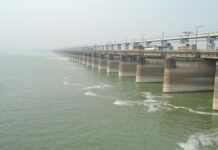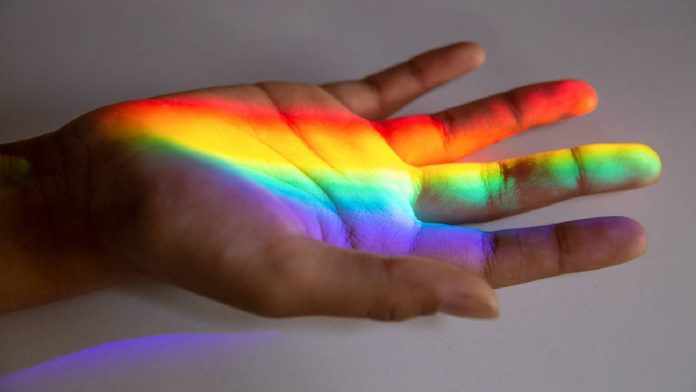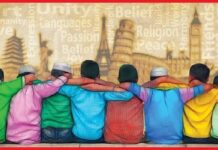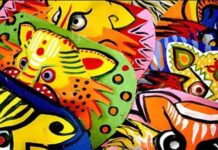Color is a spectrum: Red fades from orange to yellow, whereas green merges to turquoise, then blue.
Languages treat this spectrum in different ways: Some have separate words for “green” and “blue,” others lump the two together. Some barely bother with color terms at all.
“The question is, why?” says Dan Dediu, an evolutionary linguist at Lumière University Lyon 2. Now, he and his colleagues have found evidence for an unexpected answer: People with more exposure to sunlight are more likely to speak languages that lump green and blue together, under a term that linguists dub “grue.” That’s because of the effects of a lifetime of light exposure, the team speculates: Lots of Sun causes a condition called “lens brunescence” that makes it harder to distinguish the two hues.
Lens brunescence is just one of many theories explaining why color vocabulary is so different across languages, says study co-author Asifa Majid, a psychologist at the University of York. Others originate primarily with the environment: One theory holds that people who live near large bodies of water—like seas or lakes—could be more likely to have a word for blue. And if cultures begin to dye clothing with hard-to-produce blue pigments, that could also prompt the emergence of new color terms.
Everyone has their own pet theories, and “people normally test the theory that they like best,” Majid says. So she and her colleagues decided to put all the main ones through the wringer.
The researchers gathered data from 142 populations on every continent except Antarctica, covering widely spoken languages such as Korean and Arabic to those spoken by just a few hundred people in Australia and the Amazon. The scientists noted what color terms the main language of each population used and then gathered data on factors that might influence those terms, including sunlight exposure and proximity to large bodies of water, like lakes. They couldn’t find comprehensive data on historic dyeing technology, so they used the proxy of population size, instead: Larger populations tend to have more complex technologies, including dyeing.
Light exposure played a big role in whether languages separate blue from green, the researchers conclude this week in Scientific Reports. In brighter places (either those that were closer to the equator or had less annual cloud cover) such as Central America and East Africa, languages were significantly less likely to separate “green” from “blue.” That suggests a lifetime of exposure to bright light pushes whole communities away from baking a blue-green distinction into their language.
But the team also found support for the other two theories: Living near a lake increased the chance of having a separate word for “blue.” So did living in a larger society. That means visual perception, culture, and environment all play a role in shaping how a language carves up the color spectrum, Dediu says.
This isn’t the first study to find such factors linked to color vocabulary, says University of Bristol linguist Sean Roberts, who was not involved with the work. “But this paper is special because it considers all these factors together.”
Linguists have found evidence that small changes in how people communicate can snowball across generations of speakers, making big changes to languages over time. The researchers think that’s what happened here: Over generations, individual biases—based on visual perception and the importance of certain color terms—influenced which languages developed a separate term for the color blue.
This kind of language variation is an old puzzle in linguistics. Why would one language develop in a certain direction, whereas another takes a different path? For a long time, Dediu says, the standard answer was circular: “Languages just change … because.” Linguists thought all languages faced the exact same pressures—like people wanting to communicate as easily as possible, while still being understood. And so languages taking different paths could only be explained as the product of random chance.
But more recent research has been digging deeper for an answer, finding that languages can change rapidly because of environmental or cultural factors, says Simon Greenhill, a linguist at the Max Planck Institute for the Science of Human History, who was not involved with the research: “It’s really exciting that we’re seeing more studies looking at the big picture.” -An article first published by www.science.org
































